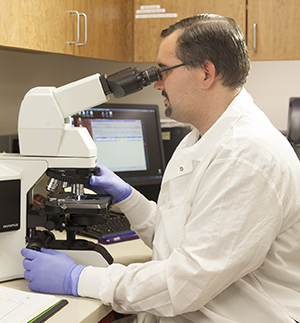How is head and neck cancer diagnosed?
If your healthcare provider thinks you might have head and neck cancer, certain exams and tests will be needed to be sure. Diagnosing head and neck cancer starts with your healthcare provider talking with you about your health history, your symptoms, risk factors, and family history of disease. A physical exam will be done. You may need to see an ear, nose, and throat specialist, called an ENT or otolaryngologist, or a head and neck surgeon.
What tests might I need?
You may have one or more of these tests:
-
Endoscopy
-
Panorex dental films
-
Barium swallow
-
CT scan
-
MRI
-
Biopsy
-
Blood tests
Imaging tests
-
Endoscopy. These tests use a long, thin, flexible tube with a light and a camera at the end. This tube is called a scope. It's put in through your mouth or nose. (Numbing medicine is sometimes used first.) It helps the healthcare provider get a close look at the inside of your nasal cavity, mouth, throat (pharynx), and voice box (larynx). The name of these tests depends on which part of the head and neck is being checked. For instance, a pharyngoscopy looks at the pharynx, and a laryngoscopy looks at the larynx. When all of these areas are checked during the same test, it's called a panendoscopy.
-
Panorex films. This is an X-ray that moves around your head to look at your upper and lower jaw. It can show if the cancer has spread into the bone.
-
Barium swallow. This is a series of X-rays taken while you swallow a thick, chalky substance called barium. The barium coats the inside of your throat so that any swallowing changes can be seen on the X-rays.
-
CT scan. In this test, an X-ray beam takes pictures of the inside of your body from many angles. These images are then combined by a computer, giving a detailed 3-D picture of your insides.
-
MRI. This test uses magnets and radio waves to take detailed pictures of the inside of your body, much like a CT scan. But MRIs don't use X-rays. MRI is very good for finding changes in soft tissues, like the tongue and tonsils.
Biopsy
A biopsy is the only sure way to know if you have cancer. During a biopsy, a tiny piece (called a sample) of tissue is removed from the changed area or tumor. Then a pathologist, a specialist who tests tissue samples in a lab, looks at the tissue under a microscope to check for cancer cells. The sample may also be tested for human papillomavirus (HPV) infection. HPV status is important to know when making treatment decisions. It usually takes a few days for the results of your biopsy to come back.
A biopsy can sometimes be done in your healthcare provider’s office. Or it may need to be done in the hospital with surgery. In that case, you’d get general anesthesia so that you're asleep and don’t feel pain during the biopsy.
If you have a lump in your neck, it may be a swollen lymph node. This swelling might be caused by cancer. Your healthcare provider can use a very thin needle to do a fine needle aspiration (FNA) biopsy. This is done to see if there are cancer cells in the lymph node. This is usually done in your healthcare provider’s office or a clinic. You don’t generally need to stay in the hospital.
Blood tests
Your healthcare provider will do tests to check your blood counts and see how well your liver and kidneys are working. Tests are also done to look at levels of substances like calcium, sodium, potassium, and magnesium. These blood tests help give an idea of your overall health.
Getting your test results
Your healthcare provider will contact you about the results of your tests and what they mean. You'll be told about other tests you may need if head and neck cancer is found. Make sure you understand the results and what your next steps should be.
Featured in


